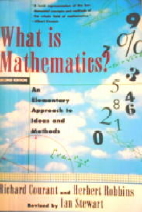I found a short paper today by Mark Andrews, Stefan Frank and Gabriella Vigliocco focused on reconciling two trends in the study of meaning in cognitive science. These two trends are represented by embodied cognition theories (which treat meaning as a simulation of perceptual and motor states) and by computational or distributional accounts of meaning (where meaning is seen as a consequence of the statistical distribution of words across spoken and written language). The authors explain:
Clark (2006) has presented a compelling account of how language can be seen as another (literally) physical environment that agents may perceive and act upon. By this account, amongst other things, language provides a new source of perceptual data and new targets for action, in a manner identical to that of any other modality. It provides “a new realm of perceptible objects. . .upon which to target (our) more basic capacities of statistical and associative learning” . In other words, language is an extension of the physical environment generally, and one that we may perceive (by language comprehension) and act upon (by language production), just as we do with any physical environment.
There is also growing evidence in support of Clark’s (2006) hypothesis that we use language as a model of, or proxy for, the world. In fact, this is highly related to the symbol interdependencyhypothesis of Louwerse (2007, 2011; Louwerse & Jeuniaux, 2008) that describes language as encoding relations in the world, including embodied relationships. By this account, we can learn and represent the world by way of learning these intra-linguistic relationships. Louwerse (2011) describes how the perceptual relationships underlying the modality-switching task of Pecher et al. (2003) (see Section 2.1) could be learned from distributional relationships in language. Louwerse (2008) similarly shows that spatial relations are encoded in word-order statistics.
The paper argues that sensory-motor data and intra-linguistic distributional data are interdependent – that something like sensory motor action is happening within the symbolic construction of language. And I think that this debate in linguistics can also serve to highlight some of the questions cognitive scientists and philosophers have had about what mathematics is and how it manages to do what it does. Mathematics has transcended what may be seen as its concrete roots (quantity and space) and looks like it has become completely dis-embodied. But it has grown into one of humanity’s most productive, yet purely abstract systems of thought.
Guy Dove, a philosopher at the University of Louisville wrote a paper last year for Frontiers in Cognition that presented an argument echoed by the Andrews paper. He says early on:
This essay proposes and defends a pluralistic theory of conceptual embodiment. Our concepts are represented in at least two ways: (i) through sensorimotor simulations of our interactions with objects and events and (ii) through sensorimotor simulations of natural language processing. Linguistic representations are “dis-embodied” in the sense that they are dynamic and multimodal but, in contrast to other forms of embodied cognition, do not inherit semantic content from this embodiment. The capacity to store information in the associations and inferential relationships among linguistic representations extends our cognitive reach and provides an explanation of our ability to abstract and generalize.
This last observation, that the capacity to store information in associations and inferential relationships extends our cognitive reach, is particularly true of mathematics.
Dove points out that the orthodox approach to concepts posits that there is no intrinsic connection between symbols and what they represent. But this presents the problem of their grounding, of symbols related to each other but to nothing else.
Perhaps the easiest way to think of this problem is to imagine trying to learn a foreign language from a dictionary in that language. Each word would be defined in terms of its connections to other words.
A well-known limitation of the evidence for embodied concepts is that it primarily involves concrete or highly imageable concepts (Pezzulo and Castelfranchi, 2007; Louwerse and Jeuniaux, 2008; Dove, 2009). This is problematic because, although it is not difficult to imagine how embodiment might help us acquire concrete concepts, it is difficult to see how it can be anything but a hindrance with abstract concepts such as DEMOCRACY, ELECTRON, ENTROPY, JUSTICE, NUMBER, PATIENCE, and TRUTH. Representations grounded in sensorimotor systems do not seem to be well suited to representing abstract intentional contents. For this reason, abstract concepts remain a critical issue for embodied cognition. More is at stake than simply the reach of this approach. For instance, Mahon and Caramazza (2008, p. 60) use the challenge posed by abstract concepts to support a parsimony argument in support of an amodal approach to concepts:
Given that an embodied theory of cognition would have to admit ‘disembodied’ cognitive processes in order to account for the representation of abstract concepts, why have a special theory just for concepts of concrete objects and actions?
Dove surveys how various embodiment theories of language account for abstract concepts. Included in his review are the conceptual blends, accomplished through metaphor, that are explored in the Lakoff/Nunez book Where Mathematics Comes From. He finds them all inadequate and proposes an alternative.
I suggest that language plays two roles in our cognitive lives. One role is to engage sensorimotor simulations of interacting with the world. In this role, language serves primarily as a medium of communication. A second role is to elicit and engage symbolically mediated associations and inferences. Our concepts are not merely couched in sensorimotor representations but also in linguistic representations (words, phrases, sentences). Conceptual content is captured in part by the relationships of linguistic representations with other linguistic representations. These relationships may be merely associative or they may be inferential…This philosophical theory of mental content holds that the meaning of a concept is determined by its functional role within the cognitive life of an individual.
One of the ways Dove defends this possibility is with the effectiveness of distribution models where the meaning of words can be derived through statistical computations applied to large bodies of text.
A couple of previous blogs come to mind here. One from last year where. within a discussion of Leibniz, Herbart, and Riemann, I described Herbart’s eccentric belief that idea’s themselves (in this context represented, perhaps, by abstract concepts) struggle to gain expression in consciousness – that they actually compete with each other to do so. This might sound odd to the ears of modern science, but what really distinguishes this notion from ours is that it gives thoughts life. This is in contrast to seeing thoughts as the output of a system or process. And this brings another blog to mind, one that highlighted the work of physicist Bob Coecke. Coecke made the observation that the way words interact in a sentence (to create meaning) is similar to the interactions in the subatomic world of quantum mechanics. Coecke has developed a mathematics that can simplify calculations involving quantum mechanical processes and he has had some success applying these methods to the study of language.
This whole blog can look like a dish of spaghetti, a little mess of overlapping strings of thoughts. But all of these discussions of meaning and cognition dig deeper into how we see in our symbolic worlds. And mathematics is exactly a thorough exploration of symbolic worlds. What seems evident in these studies is that the weave of perceptual meaning and conceptual meaning is not easily disentangled. Their observations help blur the distinction between the physical and the mental. And it is on this path that I think mathematics can do a lot to light the way.
Just for fun, I want to add that when I started writing this morning, I overheard Alex Danchev, author of the new book Cezanne: A Life, during an NPR interview. He said that Cezanne was looking for the truth, trying reconstruct or re-present the world with not only what he saw, but also what he felt.


Recent Comments